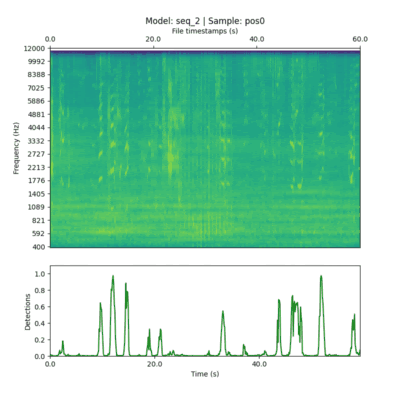Classifying Whale Sounds With Deep Learning
Our team has developed sophisticated artificial intelligence models capable of identifying the sources of underwater sounds. As of now, our primary offering is a binary classifier designed specifically for detecting killer whales. This model operates by categorizing acoustic events into one of two groups: sounds produced by killer whales and sounds not produced by killer whales.
In the GIF below, you can see a model developed by one of our PhD students, Fabio Frazao. Each peak you observe represents a detection of SRKW vocalizations made by the model. Curious about how these vocalizations sound? Check out our call catalogue with a curated set of recorded calls for a closer auditory experience.

All our current and future models are open-source and accessible via our public GitHub repository. There you can find instructions, scripts, and configuration files required to train deep learning models at detecting and classifying vocalizations made by Killer whales. Each model comes with a detailed description, including the data used for training.
We are continuously working on developing more advanced models. These forthcoming models aim to classify whale vocalizations with a higher degree of specificity, such as distinguishing between different ecotypes or even identifying individual pods. Stay tuned for these exciting developments.

